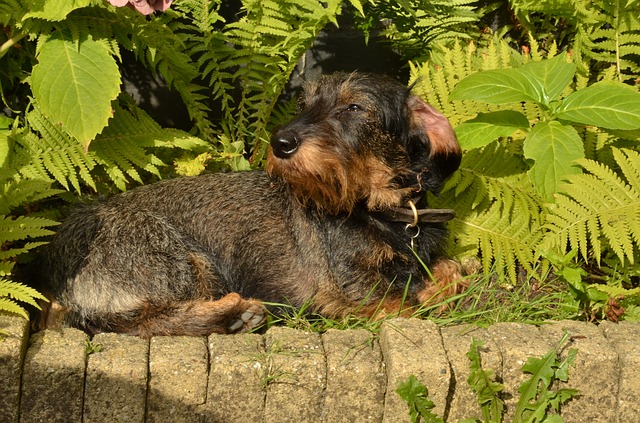Keep Your Dog Away From These Common Plants
Did you know that one of the biggest hazards to your dog’s health might be lurking outside your back door – or even in your home? Here, common plants that are poisonous to dogs are discussed.
Sago Palm
The sago palm is most often found in the southern states, as it thrives in hot and humid climates. However, it can also be found indoors. The entire plant is poisonous to pets, with the toxins concentrated in the seeds. Symptoms of sago palm poisoning in dogs include vomiting, diarrhea, loss of appetite, seizures, collapse, jaundice, and black stools. Treatment includes induced vomiting by a veterinarian, as well as IV fluids and supportive care, depending on whether any internal organs were affected.
Lilies
Certain species of this springtime plant are highly dangerous to dogs, including the peace lily, calla lily, amaryllis, autumn crocus, giant Dracaena, palm lily, and lily of the valley. A dog that has ingested lilies or its bulbs will show signs of vomiting, loss of appetite, lethargy, and kidney disease. When caught in time, kidney damage can be prevented or reversed, but dogs will require a lengthy stay at the vet, as well as IV fluids and medication.
Cardiac Glycosides
Dogbane, milkweed, foxglove, and kalanchoe plants all contain a compound that is used in heart medication, such as Digitalis. Consumption of these plants results in vomiting, drooling, changes in heartbeat, electrolyte imbalance, tremors, and seizures. Dogs that have ingested cardiac glycosides must be taken to a veterinarian right away in order to stabilize heart rate and blood pressure.
Blue-green algae
If you have a pond or other water freshwater feature in your yard, you must beware the risks of cyanobacteria for your pets. Even a few licks of the bacteria can have severe consequences for your dog, such as liver failure and the development of neurological disorders. Symptoms include vomiting, diarrhea, black stool, dehydration, shock, seizures, jaundice, disorientation, paralysis, difficulty breathing, and death. A Dog that has consumed blue-green algae require immediate care, as toxicity can result in death in as little as 3 – 4 hours.
Araceae Houseplants
Houseplants from this family include philodendron, pothos, dumb cane, arrowhead vine, sweetheart vine, devil’s ivy, elephant ear, umbrella plant, and mother-in-law’s tongue. They are poisonous because of the insoluble calcium oxalate crystals they contain. When ingested, these crystals cause mouth pain, drooling, mouth swelling, and vomiting. However, these houseplants are not as poisonous as other plants on this list, and most symptoms can be treated at home with plain yogurt, which neutralizes the damage caused by the calcium oxalate crystals.
Soluble Calcium Oxalate-containing Plants
Plants that contain soluble calcium oxalate crystals such as english shamrock, rhubarb, and tropical star fruit can cause life threatening reactions by changing an animal’s blood chemistry. Signs of calcium poisoning include drooling, loss of appetite, vomiting, lethargy, abnormal urination, and tremors. Blood tests and IV fluids will be necessary for your pet.
Corn Plant and Dragon Tree
These plants contain saponin, which acts like a surfactant to hinder your dog’s ability to absorb nutrients from food. Symptoms include dilated pupils, vomiting, drooling, diarrhea, and lethargy, but corn plant and dragon tree are otherwise not extremely dangerous.
Spring Bulbs
Bulbs are attractive to dogs because they mimic many favorite toys. However, daffodils, tulips, and hyacinth can all cause vomiting, diarrhea, and intestinal obstruction. See your animal hospital Veterinarian if ingestion occurs. Treatment includes induced-vomiting, IV fluids, and supportive care.
Please note that this is not a complete list and if you dog shows any abnormal signs after ingesting anything, seek veterinary advice as soon as possible.
The ASPCA Animal Poison Control Center Phone Number is as follows: (888) 426-4435

